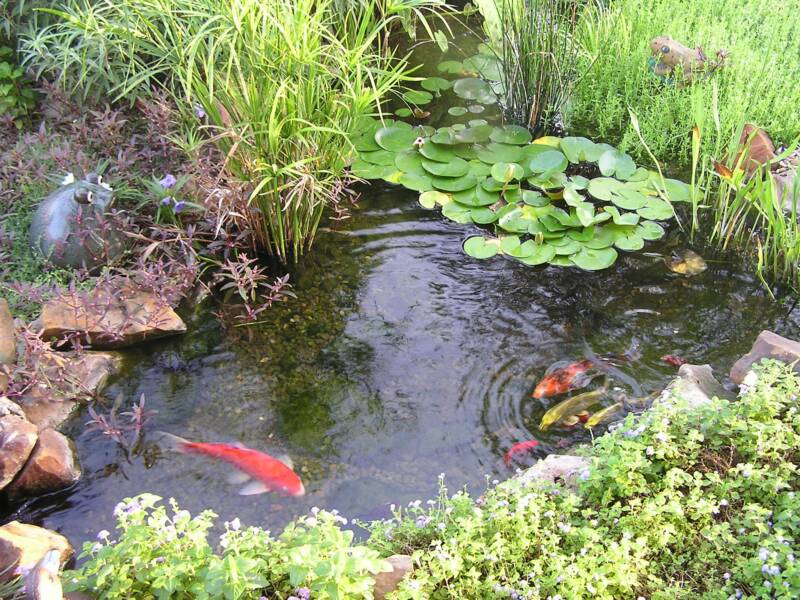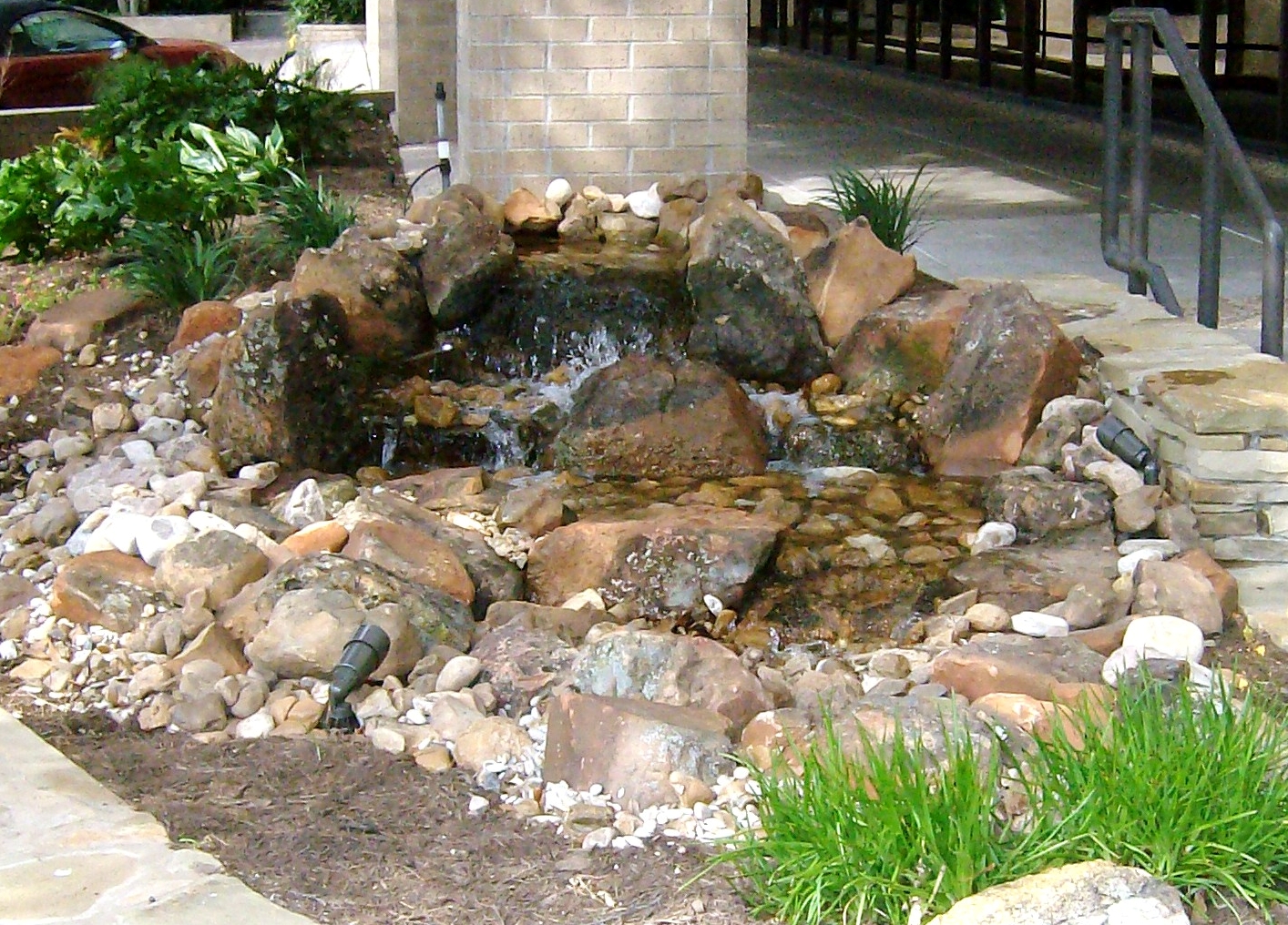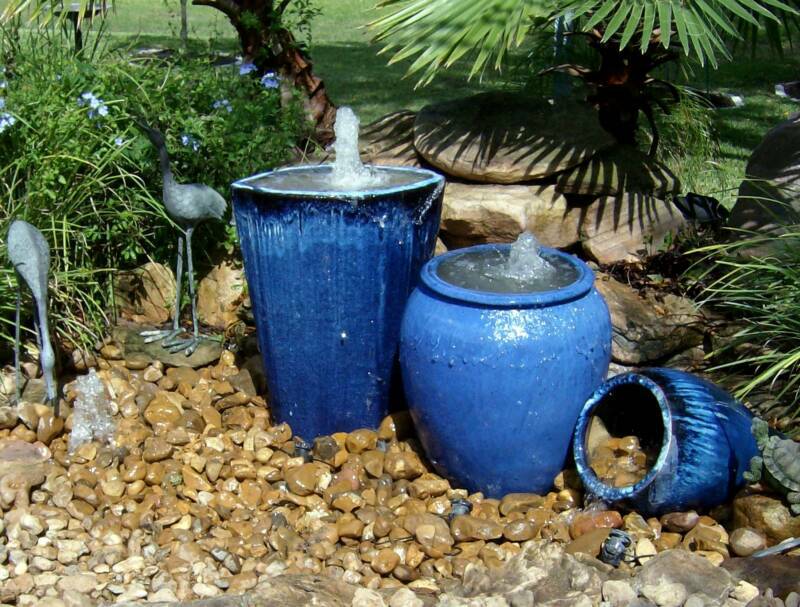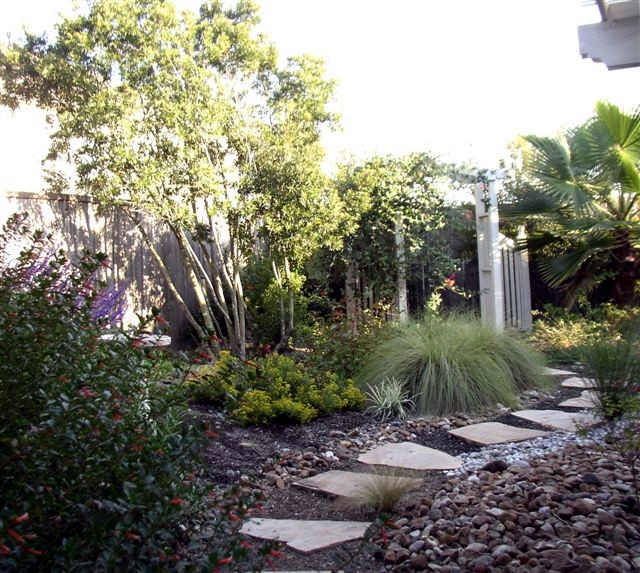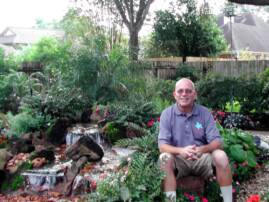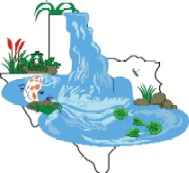


Rainwater Harvesting
Organic Ecosystem Ponds
Pondless Waterfalls
Urn and Fountain Features
Water-Wise Landscapes
Meet Your Water Feature Professionals


Texas Ponds and
Water Features
Harnessing the Power of Natural Wetlands
by Matt Boring
The Natural Water Gardener
I know that May is American Wetlands Month, but with what’s happened to the Gulf Coast recently, I feel that it’s important to educate people on the value and role of wetlands so we can understand how degradation of our natural wetlands effected the severity of this major disaster. And I’ll also tell you how professional pond builders use the awesome filtration capacities of the wetland to filter man-made water features.
Many of our natural wetlands have disappeared over the past century. Long considered wastelands, they were systematically drained and developed into farmland or more commercially viable sites. But, as is often the case, we only learn the true value of something when it’s no longer here. Wetlands are not just swampy fields of cattails filled with snakes and mosquitoes. They are a very important part of the ecosystem and play many vital roles that can’t be duplicated by other means. Some of their many functions include providing fish and wildlife habitats, storing flood waters, and improving water quality. Coastal wetlands also create a ‘speed bump’ to slow down hurricanes and floods, absorb some of their storm surge, and thus reduce effects further inland.
Due to destruction of coastal wetlands in Louisiana, there are almost open water conditions around New Orleans now. Because of wetland loss, some areas in Louisiana are no longer protected at all. Water covers roadways after large thunderstorms and in some areas, even at the daily high tide. The state has lost 1,900 square miles of wetlands since the 1930's and continues losing about 24 square miles per year. Ironically, one of the main factors contributing to the destruction of the wetlands in the New Orleans area has been construction of the levies that are supposed to protect the city from flooding. When flood waters can no longer reach the wetlands to deliver water, sediments, and nutrients, the wetlands die and compact.
Properly functioning wetlands act like a sponge, storing water and slowly releasing it. In fact the EPA estimates that an acre of wetlands can store 1-1½ million gallons of water. The wetlands slow flood waters’ momentum and reduce erosion and flood heights. They also allow for groundwater recharge, since the water doesn’t run off rapidly. And while a small wetland may not store much water, a series of them can store an enormous amount. The ability of wetlands to store water reduces the risk of property damage and loss of life. For example, the Army Corps of Engineers found that protecting wetlands along the Charles River in Boston saved over $17 million in potential flood damage.
Natural wetlands are some of the most biologically productive ecosystems in the world. In fact, you could compare them to tropical rainforests and coral reefs for their productivity and the diversity of species they support. Shallow water and abundant plant life provide diverse habitats for fish and wildlife to flourish. Aquatic vegetation flourishes in the nutrient-rich water and energy converted by the plants is sent up through the food chain to fish waterfowl and even to us humans.
These wetlands slow the flow of water around the plants, allowing sediments to drop out and settle to the floor. Nutrients from fertilizer application, manure, leaking septic tanks, and other sewage are absorbed by the plants’ roots and microorganisms in the soil. Other pollutants stick to soil particles. Natural processes in the wetlands precipitate metals, break down toxic compounds, and digest pathogens. In many cases, most of the nutrient and pollution load has been removed from the water by the time it leaves the wetlands. Some wetlands are so good at this type of filtration that environmental managers use constructed wetlands to treat storm and waste water.
To understand the filtering capacities of wetlands, pond builders need look no farther than their main components–plants. While adding aesthetic appeal to organic water gardens, plants serve an even more important role. They maintain the overall health of the pond by aiding in filtration, helping to maintain clear water, and reducing algae. Plants are an indispensable ingredient in the recipe for a balanced pond ecosystem. A balance between the fish, plants, and natural bacteria is critical to the operation of an organic backyard pond. A biological filter coupled with a skimmer is a good design to start your pond with, but without aquatic plants, or by leaving the root systems confined by a pot, balance is difficult to achieve.
For larger water features or ponds that have a heavy fish load, a constructed wetlands filter is a preferable option to multiple large biological filters. In the past, pond builders have used largely homemade wetlands filters, commonly known as ‘bog filters’. They were usually made by digging a pit, lining it with pond liner, and filling it with gravel. Plants were planted in the gravel and water was forced into the root area via an improvised manifold, installed before the gravel, usually PVC pipe with holes drilled in it. These filters worked well–maybe too well. They trapped large amounts of solids and kept the pond clear, but when they became filled with the sediment they trapped, they were very difficult to clean. Usually, the plants and all the gravel had to be removed and cleaned, then replaced. The holes in the PVC became clogged with roots and had to be cleaned when the gravel was removed from the filter. Obviously, they were only practical for small backyard ponds, if at all.
However, the leader in the organic pond industry recently introduced the first modular system for creating constructed wetlands filters. It’s expandable, so a professional pond installer can use one unit in an 8'x10' excavation to filter a 600 square foot pond or daisy chain them together, using up to 16 filter modules in a 50'x50' excavation to effectively filter an 80,000 square foot pond. This massive wetlands filter requires 380 tons of gravel and will clean a 2.5 million gallon pond with capacity to spare! This monster can hold three semi-trucks full of accumulated sludge and sediment and still function effectively! Clearly this is much more than the average backyard water gardener needs. There also a half-unit now available for smaller ponds or to bolster the existing biological filtration on mid-sized ponds.
I have a customer with a 16'x22' pond that’s already equipped with two Biofalls filters. When it was new, she really liked to feed the fish and didn’t see how they could live without her adding fish food. She had four Koi that nearly doubled in size in a year and 20-30 goldfish that went from about 3" to about 12" in the same amount of time and also had babies while they were at it. After the second year, she wanted much of the aquatic vegetation removed because it was taking up pond space and blocking the view of her two waterfalls. But removing the majority of the plants upset the balance in the pond’s ecosystem and algae started to develop. I told her that we could either add plants to the system, remove fish from the pond, OR install a small constructed wetlands filter that would feed a tiny stream into the side of her pond. She decided to try the third option because her fish are like pets and are now part of the family.
After the filter was installed and operational, it only took a few days to notice the difference in water quality. The little specs of algae that were seen moving around in the water disappeared, trapped in the gravel of the bog filter. Her skimmer basket was not collecting the slimy algae that was making her have to rinse it out each time she emptied it. The water is once again clear as a bell and her fish seem much healthier and happier. The plants in the bog filter will now use the nutrients from the sediment it traps as their fertilizer and the algae has once again been starved out of the system.
Perhaps the best feature of the constructed wetlands filtration system is the ability to easily clean it. The components in use include a “centipede” module that lays on the bottom of the filter area slowly releasing water through the plants’ roots and a “snorkel vault” that reaches up to the surface of the gravel of the constructed wetlands filter. When the time comes to clean the filter, all you really have to do is remove the cap from the snorkel, lower a pump into the vault, and pump out the sludge, rinsing the gravel from the top as you go. The ‘sludge’ is nutrient-rich and makes a great organic fertilizer for vegetable or flower beds. You can even mix it with water and broadcast it over your lawn. The gravel never has to be removed to be cleaned and the whole process takes only a few minutes to complete. Best of all, if the plants need to be divided, they are easily pulled from the gravel, divided, and replaced.
You’re sure to hear more about constructed wetlands or ‘bog’ filters in the future. Until then.....
....Happy Pondering!

